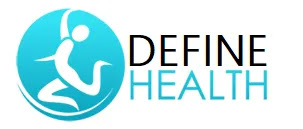Diabetes
Diabetes
What causes Diabetes?
Some of us may have heard the term
"Sugar" used in describing what is medically known as diabetes. This
reference is not totally without fact. Food is broken down into the vitamins
and nutrients needed for energy. Sugar or Glucose is a source of energy for the
cells of the body. The sugar (glucose) must leave the blood stream and enter
the cells to provide energy for the body. Insulin is the vehicle that is needed
for glucose to enter the cells. Diabetes occurs when sugar (glucose) is unable
to enter the body cells due to a problem with insulin. The type of diabetes is
determined based on whether your body is able to produce enough insulin or
whether insulin is produced at all.
Types of Diabetes
There are two types of
Diabetes. They are described as Type 1 and
Type 2. People with Type 1 Diabetes do
not produce insulin. People with Type 2
Diabetes do not produce enough insulin or the cells do not recognize the
insulin therefore rejecting the glucose.
Signs & Symptoms
- Type 1 Diabetes
Always Thirsty
Frequent Urination
Always hungry
Weight loss
Headaches
Blurred vision
Confusion
Shakiness
Very tired, all the time
- Type 2 Diabetes
Always Thirsty
Frequent Urination
Always hungry
No weight change or weight loss
Blurred vision
Headaches
Confusion
Shakiness
Tired
Sores that won’t heal
Sometimes no symptoms
Explanation of Symptoms
- Always thirsty ~ This is an effort by the body to dilute the high concentration of sugar in the blood. Additionally, cells become dehydrated because of the movement of water from the cells to the bloodstream to dilute the concentrated blood sugar.
- Frequent Urination ~ The kidneys respond to the high blood sugar levels by dumping sugar into the urine. Water follows in an effort to dilute the concentrated urine. This results in the production of a large amount of urine and many trips to the bathroom.
- Always hungry ~ Although there is plenty of sugar in the bloodstream, the cells of the body are not receiving the nutrients needed to provide energy. Essentially the cells are starving. The brain gets the message and responds by making the person feel hungry.
- No change in weight or weight loss ~ People with Type 1 Diabetes will lose weight because they produce no insulin. Their cells are starving. Therefore they produce energy by burning existing body fat resulting in weight loss. People with Type 2 diabetes make insulin but, it is not enough insulin or the cells do not recognize the insulin. Because the cells receive some glucose, they may or may not experience weight loss.
- Blurred vision/Shakiness/Headaches/Confusion ~ Unlike the cells of the body, brain cells only use glucose for energy. Therefore when sugar (glucose) levels get low the brain responds with the following symptoms based on how low the sugar levels are.
- Tired ~ The person feels tired because the body cells are not receiving sufficient nutrients to provide energy.
- Sores that won’t heal ~ The high levels of glucose impairs the ability of the immune system to respond to injury. Additionally the prolonged healing time provides an opportunity for an infection to set up where bacteria thrive in the glucose rich environment.
Diabetes Prevention & Treatment
The best way to prevent diabetes
is to identify and correct your risk factors.
What are the risk factors?
1. Sedentary lifestyle
- Correction: Exercise 2-3 times per week
2. Poor Diet
- Correction: Eat right. Use whole grains instead of white flour. The high fiber content helps keep blood sugar levels steady. Eat a variety of fruits and vegetables, which are also high in fiber and vitamins needed to maintain good health.
3. Obestiy
- Correction: Lose weight by eating right and exercising.
4. Age, Race, and Family History
- Correction: We can’t change our race, who our parents are, or when we are born. Therefore one should focus on the areas we can change our diet, activity level, and weight.
If you have Diabetes there are
several treatment options. They include
lifestyle changes, diet, and medication.
All people with diabetes are encouraged to watch their diet.
People with type I Diabetes (who make no insulin) require insulin replacement. They will be prescribed a diet to follow that takes into consideration nutritional needs and the amount of insulin needed to control blood sugar levels.
People with mild cases of Type II
Diabetes may be able to manage their diabetes with lifestyle changes and diet
alone. This option may involve losing
weight and watching the amounts of sugar and carbohydrates eaten. If you are overweight, losing even five
pounds can make a dramatic difference in how your body responds to the insulin
you produce.
People with Type II Diabetes whose
blood sugar levels are difficult to control may require medication. These medicines work by encouraging the body
to make more insulin or by helping the body better use the insulin it already
has. If blood sugar levels do not
respond the next step is to take insulin.
Why are prevention and treatment so important?
Diabetes affects the whole body. If left uncontrolled it can result in kidney failure, heart disease, blindness, and even death. These problems can be delayed or prevented by correcting risk factors and following prescribed treatments.


